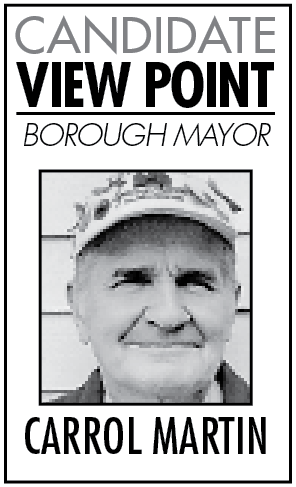My main concerns for the entire Kenai Peninsula are increasing our own food production and reducing fire danger and damage.
Reducing wild fire danger and damage and increasing food production can happen at the same time. Everyone knows how lucky it was that our recent major fire burned many acres out Funny River Road with little property damage. Only the old timers remember the wildfires that jumped the Kenai River and burned through Kalifornsky Beach Road, Ciechanski Road, East and West Poppy, Gaswell and Echo Lake Roads over 50 years ago. The forestry experts say the fuel bio mass is now back up to a critical level.
Also, most people do not know that this area was set aside for veteran’s preference homesteads at the end of World War II. It was determined at that time to be the best available number one agricultural soil in Alaska. In fact, National Geographic Magazine reports that recent satellite mapping identifies the western Kenai Peninsula as the largest undeveloped number one soil in the world. Soils like this grow dense forests and then burn again and again. This is an asset that needs to be producing food rather than fires.
Land in agricultural production is a good firebreak. We can identify parcels that would connect current existing green areas and grant tax breaks and fund low interest loans.
Increasing food production will become critical with the next earthquake and tsunami. I was in Alaska on Good Friday 50 years ago. At that time Alaska was producing 80 percent of our food supply. Now, we are producing only 3 percent and our population has doubled. Another change is our stores do not have warehouses. Groceries go from the freight containers to the store shelves at night. This means we have approximately a seven-day supply on hand. Currently, our emergency supplies are in Portland. After the 1964 quake, it took months to repair airports, docks, highways and the railroad.
We have a very complete “AG in the Classroom” curriculum available to our schools. The National Guard, Soil Conservation Service, Cooperative Extension Service and other qualified volunteers are willing to teach it but our school district does not use it. It is being used successfully in Anchorage, the Mat-Su District and in Fairbanks. We should be doing this on the Kenai with a greenhouse by every elementary school in the district. Since 1976 almost every preschool and elementary school child has visited our Diamond M Ranch and currently farm tours are offered to any group who asks. Every summer hundreds of tourists take advantage of this activity. It is amazing to learn what the average person does not know about food production.
Our property tax reduction structure for agricultural lands is not working and needs revising. Greenbelts cause higher property values and a better quality of life. Firebreaks and agriculture go hand in hand and share costs. Sooner or later Kenai, Soldotna and the K Beach area need to cooperate in coordinating greenbelts, firebreaks, and parks and recreation areas.
We have all the ingredients for plant nutrients to make very productive soil. All fish waste should be composted with chips and grass clippings rather than pumping it out into Cook Inlet which is not environmentally sound. We have an agricultural lime mine at Cooper Landing and we are burying all the municipal waste whereas Fairbanks and other parts of the state and even the world use it for hay, grain and revegetation.
Thank you.
Carrol Martin: We need to grow more of our food


